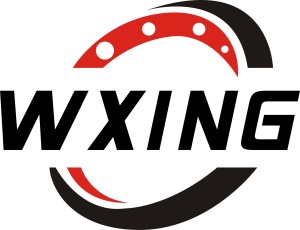PRODUCT
Fasteners manufacturing process to increase the risk of hydrogen embrittlement
by:Waxing
2020-10-02
Threaded fasteners in the process of manufacturing, such as conditioning (
Quenching and high temperature tempering)
, cyanide, carburizing, electrochemical cleaning, phosphating, electroplating, roller milling and machining (
Without proper lubrication burning)
Such as process, or in the service environment, due to the adverse effect of cathodic protection or corrosion reaction, hydrogen could enter the steel or other metal matrix, and stays within the matrix, in below the yield strength of the stress state, it could lead to extensibility or a reduction or loss of bearing capacity, crack,
Usually submicroscopic)
, straight to occur in the process of service process or store suddenly rupture, causing severe brittle failure.
Threaded fasteners, especially high strength fastener material restructuring, cold forming, hardening, grinding or machining, heat treatment after milling thread, then surface treatment, easy to damage by hydrogen embrittlement.
But the pickling, electroplating electroplating processing is a key one of the factors that produce hydrogen embrittlement.
(
1)
When pickling, pickling, parts, steel hydrogen reacts with acid, Fe + H +, Fe2 + + H2 write.
Steel direct contact with active hydrogen atom at this time, even if the pickling time shorter acid concentration is low, there will be a small amount of hydrogen into.
(
2)
Oil, oil removal: the cathode electric lift while high oil removal efficiency, but when electricity as cathode exhalation hydrogen atoms on the surface of parts, resulting in the hydrogen permeability.
(
3)
Heat treatment, heat treatment, high output production line adopt continuous mesh belt furnace, quenching furnace would drip within a certain amount of methanol and propane as protective atmosphere to prevent decarburization.
Shielding gas in the pyrolysis tank high temperature cracking of H2, CO, CO2, CH4, etc. , the parts under the environment of high temperature, hydrogen is easier to penetrate.
(
4)
, electroplating, plating parts the same as the cathode, not only on the cathode deposition such as zinc, nickel plating, also there will be precipitation of hydrogen.
But studies have shown that the coating of hydrogen barrier, once the parts deposition, after a certain thickness of the coating on the hydrogen is hard to penetrate the steel substrate, similarly, had already penetrated hydrogen is difficult to escape again.
Fasteners are prone to hydrogen embrittlement failure risk must meet the following three characteristics, high tensile strength, or A hardening or surface hardening;
B, adsorption of hydrogen;
C, under tensile stress condition.
With the improvement of parts hardness, carbon content increases, the degree of cold work hardening reinforcement, in the process of acid pickling and galvanized.
The solubility of hydrogen and therefore produce the amount of hydrogen absorption will also increase, that is part of the stronger the hydrogen embrittlement sensitivity.
Diameter and the diameter of the smaller parts than parts hydrogen brittleness sensitivity is strong.
Custom message































































































